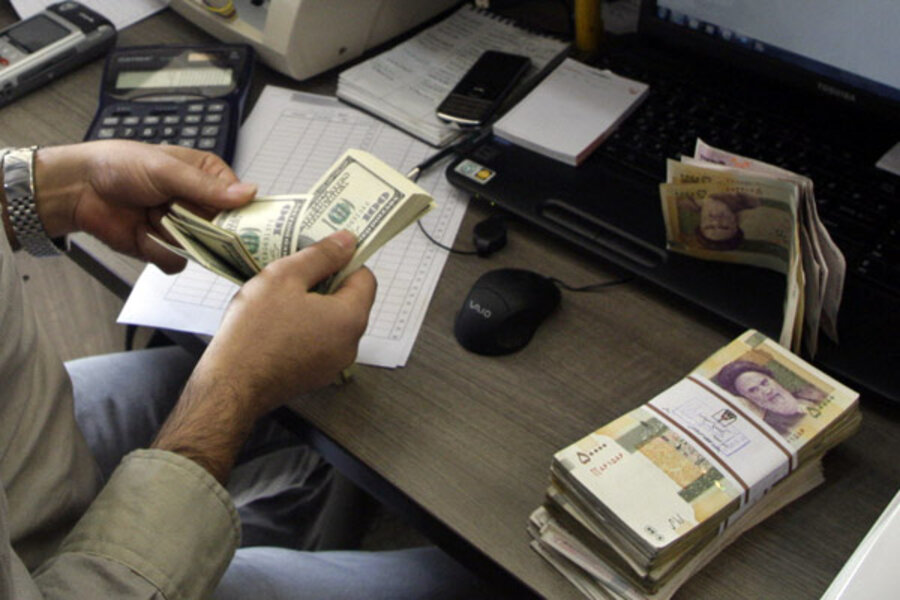Iran's currency crash a blow to Ahmadinejad
Loading...
| Washington
As Iran experiences new, harsh US and international economic sanctions over its nuclear program – a program considered by much of the country as a matter of national pride – a stable currency has become a national security priority.
“Even though it's not necessarily good for the economy, amidst sanctions a stable currency creates an illusion of strength,” says a veteran analyst in Tehran. “It reflects how nonvulnerable the Iranian economy is to sanctions.”
But in the past week Iran's currency – the rial – dropped almost 30 percent after President Obama approved new sanctions targeting Iran's Central Bank. The rial has since rebounded significantly from a low of 17,800 rials to the dollar on Monday. However the Central Bank has tried to introduce a cap on the market rate of 14,000 rials to the dollar, and the government announced that anyone caught selling rials at a higher rate would be arrested.
A sign of national strength
In a country such as Iran, with a rich history of empire and a powerful literary tradition, national pride has remained strong even in the wake of growing discontent with the country's Islamic regime and mounting global isolation. A stable currency in recent years, in the face of economic sanctions, has shored up that pride.
Since Iran's 1979 revolution, which led to the overthrow of the Pahlavi monarchy and the eventual establishment of an Islamic Republic, Tehran has used massive state subsidies as a means of fulfilling its revolutionary promise to redistribute wealth and achieve “economic justice” for all Iranians.
A stable, overvalued currency was considered a critical aspect of these programs. In the wake of the Iraqi invasion of Iran in 1980, a strong currency became a symbol to both the world and the Iranian population, which was beleaguered by war with Iraq throughout the 1980s – that an Islamic government could keep the country as strong and stable as its imperial predecessor.
But the overvaluing of Iran's currency has come at a considerable price. It has worsened the country's imbalance in foreign trade by encouraging imports and discouraging non-oil exports. It has also reduced state spending on economic development programs, subsidized large-scale consumption of imported goods – particularly among the country's wealthier urban classes – and poured more of Iran's natural and state resources into commerce instead of production.
Bad for Ahmadinejad
For President Mahmoud Ahmadinejad's administration, which has embarked on a controversial state program to cut national subsidies while engaging in large-scale government spending, a strong currency creates a sense of domestic economic strength and stability on the Iranian street, which is extremely sensitive to Iran's damaged standing in the eyes of the international community.
The recent precipitous decline of Iran's currency, has therefore been a big blow for the Iranian president – and for Iranian pride.
“For Ahmadinejad, a strong rial is a part of this whole idea of, 'It's us against the world,'” the analyst in Tehran says. “This breaks that image.”
Get daily or weekly updates from CSMonitor.com delivered to your inbox. Sign up today.
Follow Roshanak Taghavi on Twitter at www.twitter.com/RoshanakT.







